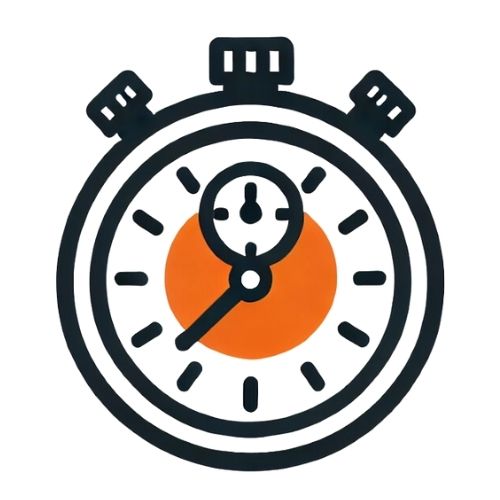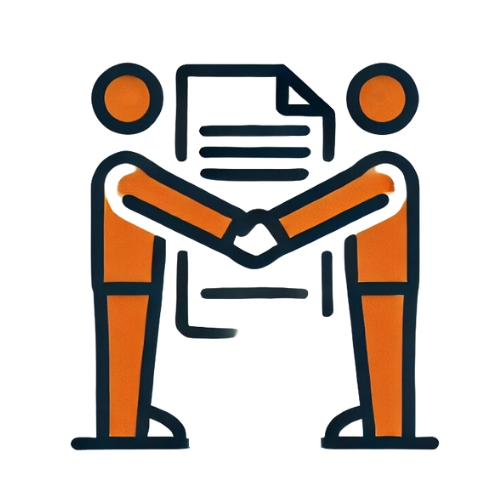
Choosing between health insurance and medical aid can be confusing for many South Africans. Both options help cover healthcare expenses, but they work differently, offer different benefits, and come at different costs. Many people take out one without fully understanding how it will affect their access to treatment or ability to manage medical bills. In South Africa’s healthcare system, those wanting quality private care usually need some form of cover.
Key Takeaways
- Medical aid offers broader cover: Medical aid provides extensive benefits, including hospital care, chronic condition treatment, and day-to-day healthcare needs, but comes at a higher monthly cost.
- Health insurance offers flexibility: Health insurance covers specific events, such as accidents or critical illness, with lump-sum payouts that can be used as needed, making it a more affordable but less comprehensive option.
- Claims are handled differently: Medical aid typically pays healthcare providers directly, while health insurance pays a lump sum to the policyholder, who then manages the expenses.
About Arcadia Finance
Secure your loan easily with Arcadia Finance. With no application fees and access to 19 trusted lenders accredited by South Africa’s National Credit Regulator, you’ll enjoy a seamless process and reliable financial solutions tailored to your needs.
What Is Health Insurance?
Health insurance plans were launched to provide a more affordable option for individuals needing medical cover. These plans are regulated under either short-term or long-term insurance laws and are not subject to the same rules that apply to medical aid schemes. As a result, they do not need to include the legally required Prescribed Minimum Benefits and may apply their own waiting periods and entry age limits.
To maintain affordability, these policies are generally designed to cover mainly out-of-hospital medical needs such as general practitioner visits, prescribed medication, basic dental care, and certain optometry services. Access to these services is usually controlled through strict provider networks. Some plans may offer a limited benefit towards stabilisation in an emergency hospitalisation or for certain illnesses, but adding this benefit will affect the monthly cost of the cover.

What Is Medical Aid?
By law, medical aid schemes must include a specified set of minimum benefits known as Prescribed Minimum Benefits. This cover includes 270 listed life-threatening hospital procedures and 26 chronic conditions. Medical aid providers are required to accept all applicants and may only apply a waiting period of up to 12 months on cover for pre-existing conditions, depending on a person’s previous cover history.
Medical aid plans usually provide very high, or in some cases unlimited, annual cover for private hospital care. This higher level of cover is one of the reasons why medical aid premiums start at a higher price point than most health insurance products.
Ongoing policy shifts are reshaping how South Africans evaluate private healthcare cover and affordability. As highlighted in Government Pushes Ahead With Plans to Scrap Medical Aid Tax Credits, the potential removal of tax relief could significantly alter the cost balance between medical aid schemes and alternative health insurance options.
Terms To Stay Aware Of

Prescribed Minimum Benefits (PMBs)
These are a list of specific medical conditions and treatments that all registered medical schemes in South Africa are legally required to cover. This includes emergency care and a defined set of chronic illnesses, ensuring that members receive a basic level of healthcare regardless of the benefit option they have selected.

Late-Joiner Penalty
If you join a medical aid scheme after turning 35 and have not had continuous medical aid cover before, you may be charged an additional fee on top of your monthly contributions. This penalty is meant to balance the risk to the scheme when individuals join later in life without previous contributions.

Waiting Period
This is a fixed time period during which you will not have access to some or all benefits after joining a medical aid scheme. Waiting periods often apply to new members or those with existing medical conditions, and the length and type of cover exclusions depend on the scheme’s rules and your personal health history.

Co-Payment
This refers to the portion of the cost that the member must pay directly to the healthcare provider before the medical scheme contributes to the rest. Co-payments usually apply to specific treatments or procedures and can vary depending on the service and the plan you are on.

Pre-authorisation
Certain medical procedures or hospital admissions require you to get approval from your medical scheme before the treatment takes place. This process ensures that the procedure is covered under your plan and helps avoid unexpected out-of-pocket costs.

Key Differences: Health Insurance Vs Medical Aid
Understanding the differences between these two types of cover helps South Africans choose the right healthcare solution. By comparing the key features of each, you can select a policy that suits your healthcare needs, fits your budget, and matches your level of financial risk tolerance.
| Category | Medical Aid | Health Insurance |
|---|---|---|
| Regulatory Framework | Medical aid is regulated by the Medical Schemes Act. All schemes are required to include Prescribed Minimum Benefits (PMBs), which ensure that members receive treatment for chronic illnesses and emergencies. This system helps guarantee that everyone has access to necessary healthcare services, regardless of their health history. | Health insurance follows different rules, as it is governed by the Short-term and Long-term Insurance Acts. These policies are not required to provide PMBs. Instead, they pay specific amounts for clearly defined events, such as a hospital stay following an accident or a diagnosis of a serious illness. Since the benefits can vary a great deal from one policy to another, it is necessary to review each product carefully to understand exactly what is covered. |
| Cost And Coverage Scope | Medical aid provides broad healthcare cover. It typically includes treatment in hospital, visits to doctors, medication for chronic conditions, maternity care, and often some dental and optical benefits depending on the plan. This kind of cover is well suited for individuals with regular healthcare needs, families, or anyone seeking comprehensive protection. | Health insurance provides more limited cover. It typically includes hospital cash plans that pay a daily amount, critical illness cover that pays a lump sum for serious conditions, and accident cover that provides financial support after injuries. These policies help during specific medical events but do not cover all healthcare costs. Premiums depend on age, health, and family size, with fixed benefit limits and possible premium increases after claims. |
| Payment Structure | Medical aid either reimburses you for your healthcare costs or pays the healthcare provider directly. This means that many of your medical expenses are handled through your scheme, so you will not always have to make large upfront payments yourself. | Health insurance operates differently. When a covered event occurs, you receive a cash payout. You are then free to decide how to use this money, whether to settle medical bills, manage household expenses, or cover income loss during your recovery period. |
| Flexibility And Customisation | Many medical schemes, such as Profmed, offer a range of plans. Options can vary from basic hospital-only cover to more comprehensive plans that include day-to-day medical expenses. Members are allowed to change their cover once a year, making it easier to adapt to any changes in financial circumstances or healthcare needs. | Health insurance policies allow for more customisation around specific risks. You can choose to add cover for critical illness, accidents, or hospital stays, depending on your personal situation and budget. This helps you create a more affordable package that still offers financial support when needed, though it does not provide the same wide-ranging cover as medical aid. |
Cost Comparison
| Feature | Medical Aid | Health Insurance |
|---|---|---|
| Typical Monthly Cost | R5 600 to over R10 000 for a family | R1 000 to R2 000 for a family (basic primary care) |
| Additional Benefits Cost | Included in comprehensive plans | R100 to R700 extra per month for hospital/accident |
| Individual Entry-Level Plan | From around R1 400 per month (hospital-only cover) | Fixed benefit policies, generally cheaper |
| Cost Increases | Average increase of 10.5% to 10.7% in 2025 | Premiums may increase after claims |
| Scope of Cover | Full medical cover, including hospital and chronic care | Specific event-based cover (accident, illness) |
| Cost Predictability | Higher but predictable within benefit structure | Lower, but subject to limits and benefit caps |

How Claims Are Paid
Medical Aid: Direct or Reimbursement Payment
Medical aid aims to handle claims smoothly via electronic data interchange (EDI). Most providers send claims straight to the scheme electronically, allowing for faster processing and payment to the provider. This method reduces errors and speeds up payment cycles, which usually run twice a month.
If your provider doesn’t use EDI, you may pay upfront and claim reimbursement yourself. You can submit scanned or photographed invoices via app, email, or online portal. Once processed, the scheme either reimburses you or pays the provider directly . If a claim is rejected or only partially covered, the scheme provides reasons so you can correct and resubmit.
Health Insurance: Lump-Sum Cash Payouts
Health insurance works differently. You submit a claim form and supporting documents (medical reports, diagnoses, proof of event or treatment) when a covered event occurs, such as hospitalisation, critical illness, or accident.
Once approved, the insurer pays a fixed lump-sum amount directly to you. You can use that cash for any purpose like medical bills, living expenses, or income replacement. Payout generally arrives within a few weeks of approval .
Factors To Consider While Choosing Between Health Insurance And Medical Aid
When deciding between health insurance and medical aid, it is helpful to think about the following factors:
- Consider your own healthcare needs and those of any family members.
- The number of dependants may influence which option suits your situation.
- Your monthly budget will affect what level of cover is realistic.
- Take into account any chronic conditions or required PMB treatments.
- Think about any planned medical procedures that may require cover soon.
- Compare in-hospital and out-of-hospital benefits offered by each option.
- Be prepared for the cost of hospitalisation, which can be very high.
- Check whether your preferred doctors and hospitals are in the provider network.
- Understand what out-of-pocket costs you might still need to cover.
- Both products provide some level of financial protection against unexpected medical costs.
- Some plans include loyalty benefits, which may also be worth considering.
Conclusion
Choosing between health insurance and medical aid depends on your healthcare needs, financial situation, and the type of cover you require. Medical aid provides broader cover, including hospital treatment, chronic care, and day-to-day medical services, but it comes with higher monthly costs. Health insurance offers a more affordable option and pays lump sums for specific medical events, though it does not cover all healthcare needs. It is worthwhile to review your personal requirements carefully and, if needed, combine options such as health insurance and gap cover to ensure more complete protection.
Frequently Asked Questions
Yes. Many people choose to take out both. Medical aid provides more complete healthcare cover, while health insurance or gap cover can help manage extra costs such as hospital shortfalls or expenses that fall outside medical aid benefits.
In most cases, yes. Health insurance typically has lower monthly premiums than medical aid, making it more affordable. However, the cover is not as extensive and may only apply to certain events, such as accidents or critical illnesses.
Not always. While medical aid covers a wide range of treatments, there are often benefit limits, co-payments, or exclusions. You may still face some costs for treatments or specialists that charge more than your plan allows. Many people use gap cover to help with these extra expenses.
Medical aid claims are generally processed quickly, often within a few weeks, or paid directly to providers on regular cycles. Health insurance claims can take a little longer, as they usually involve more paperwork and assessment, and payments are made as lump sums once the claim is approved.
If you miss a payment on your medical aid, your cover may be temporarily suspended after a short grace period, meaning you may not be able to claim during that time. For health insurance, missing a payment can result in the policy lapsing, so no future claims would be paid unless you reinstate the policy.
Fast, uncomplicated, and trustworthy loan comparisons
At Arcadia Finance, you can compare loan offers from multiple lenders with no obligation and free of charge. Get a clear overview of your options and choose the best deal for you.
Fill out our form today to easily compare interest rates from 19 banks and find the right loan for you.



